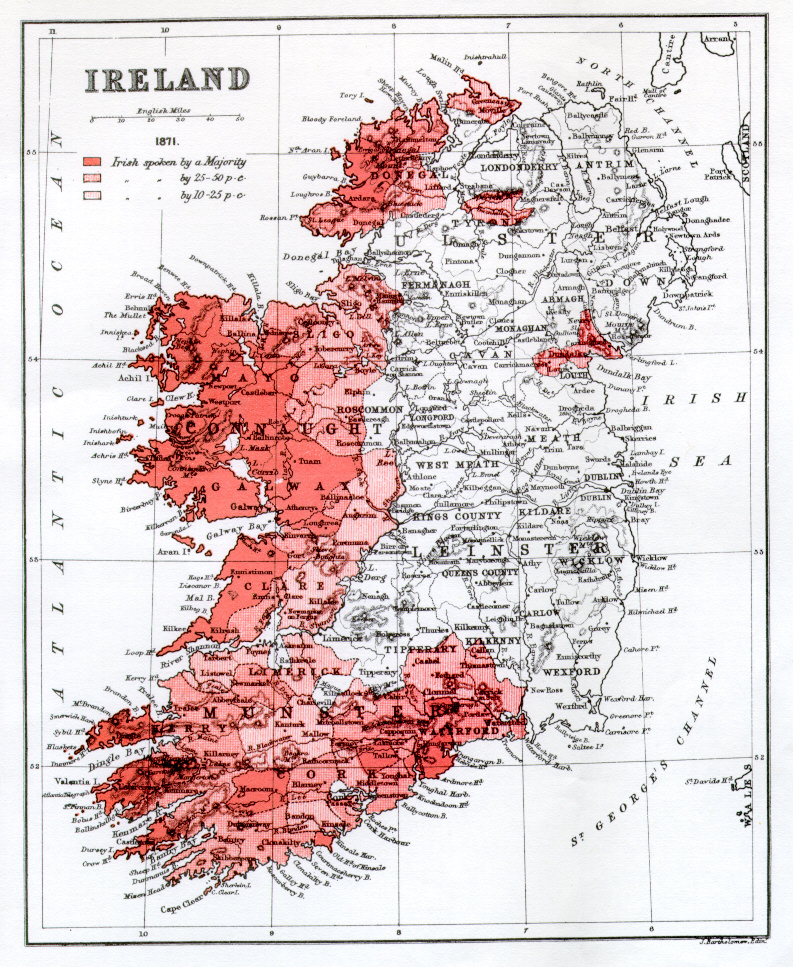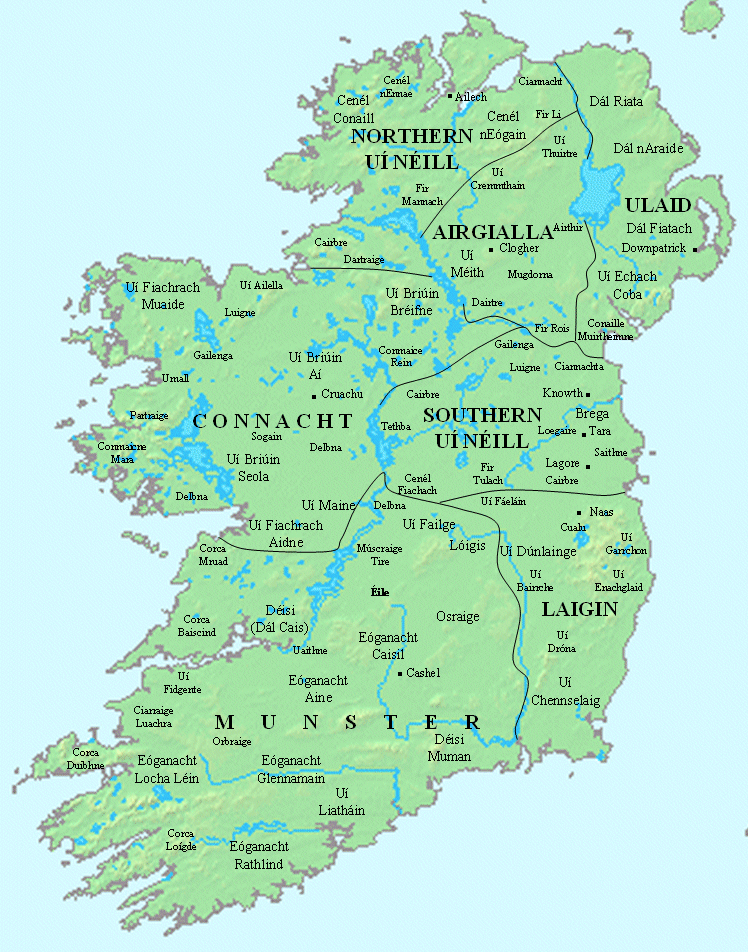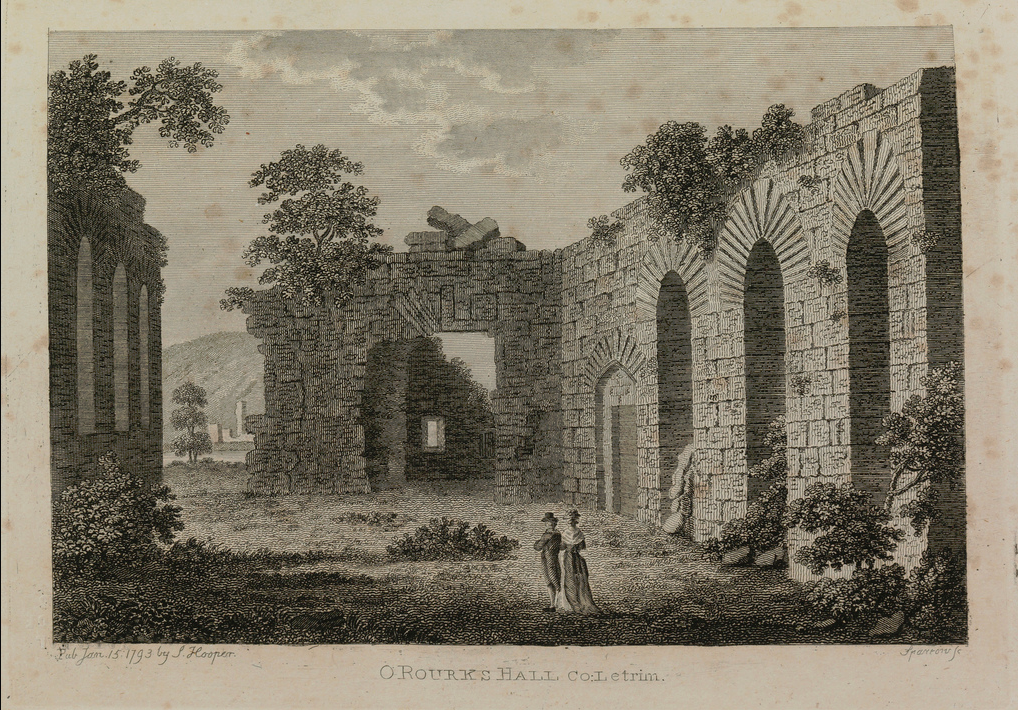|
Aedh Mac Aedh Breifneach Ua Conchobair
Hugh McHugh Breifne O'Conor (Irish: ''Aedh mac Aedh Breifneach Ua Conchobair'') was king of Connacht, Ireland, in 1342. He was the last of the Clan Murtagh O'Conor The Clan Murtagh O'Conor (Irish: ''Clan Muircheartaigh Uí Conchobhair'') were descendants of Irish High-King Toirdelbach Ua Conchobair, through his son, Murtogh Moynagh O'Conor (d.1210), tánaiste of Connacht. They have been defined by Katherine ... to hold this position. He died in 1350, as the O'Connor Breifne (''Ó Conchobar Brefnech''), some eight years after being expelled. His father, a son of Cathal O'Connor had briefly made a bid for the kingship in 1309-10 from a power-base established in Breifne O'Rourke. References * ''Annals of Ulster'' aaUniversity College Cork* ''Annals of the Four Masters'' aaUniversity College Cork* ''Chronicum Scotorum'' aaUniversity College Cork* Byrne, Francis John (2001), ''Irish Kings and High-Kings'', Dublin: Four Courts Press, * ''Gaelic and Gaelised Ireland'', Kenneth Nic ... [...More Info...] [...Related Items...] OR: [Wikipedia] [Google] [Baidu] |
Irish Language
Irish (an Caighdeán Oifigiúil, Standard Irish: ), also known as Gaelic, is a Goidelic languages, Goidelic language of the Insular Celtic branch of the Celtic language family, which is a part of the Indo-European languages, Indo-European language family. Irish is indigenous language, indigenous to the Ireland, island of Ireland and was the population's first language until the 19th century, when English (language), English gradually became Linguistic imperialism, dominant, particularly in the last decades of the century. Irish is still spoken as a first language in a small number of areas of certain counties such as County Cork, Cork, County Donegal, Donegal, County Galway, Galway, and County Kerry, Kerry, as well as smaller areas of counties County Mayo, Mayo, County Meath, Meath, and County Waterford, Waterford. It is also spoken by a larger group of habitual but non-traditional speakers, mostly in urban areas where the majority are second language, second-language speakers. ... [...More Info...] [...Related Items...] OR: [Wikipedia] [Google] [Baidu] |
Connacht
Connacht ( ; ga, Connachta or ), is one of the provinces of Ireland, in the west of Ireland. Until the ninth century it consisted of several independent major Gaelic kingdoms (Uí Fiachrach, Uí Briúin, Uí Maine, Conmhaícne, and Delbhna). Between the reigns of Conchobar mac Taidg Mór (died 882) and his descendant, Aedh mac Ruaidri Ó Conchobair (reigned 1228–33), it became a kingdom under the rule of the Uí Briúin, Uí Briúin Aí dynasty, whose ruling sept adopted the surname Ua Conchobair. At its greatest extent, it incorporated the often independent Kingdom of Breifne, as well as vassalage from the lordships of western Mide and west Leinster. Two of its greatest kings, Tairrdelbach Ua Conchobair (1088–1156) and his son Ruaidri Ua Conchobair (c. 1115–1198) greatly expanded the kingdom's dominance, so much so that both became High King of Ireland. The Kingdom of Connacht collapsed in the 1230s because of civil war within the royal dynasty, which enabled widesp ... [...More Info...] [...Related Items...] OR: [Wikipedia] [Google] [Baidu] |
Ireland
Ireland ( ; ga, Éire ; Ulster Scots dialect, Ulster-Scots: ) is an island in the Atlantic Ocean, North Atlantic Ocean, in Northwestern Europe, north-western Europe. It is separated from Great Britain to its east by the North Channel (Great Britain and Ireland), North Channel, the Irish Sea, and St George's Channel. Ireland is the List of islands of the British Isles, second-largest island of the British Isles, the List of European islands by area, third-largest in Europe, and the List of islands by area, twentieth-largest on Earth. Geopolitically, Ireland is divided between the Republic of Ireland (officially Names of the Irish state, named Ireland), which covers five-sixths of the island, and Northern Ireland, which is part of the United Kingdom. As of 2022, the Irish population analysis, population of the entire island is just over 7 million, with 5.1 million living in the Republic of Ireland and 1.9 million in Northern Ireland, ranking it the List of European islan ... [...More Info...] [...Related Items...] OR: [Wikipedia] [Google] [Baidu] |
Clan Murtagh O'Conor
The Clan Murtagh O'Conor (Irish: ''Clan Muircheartaigh Uí Conchobhair'') were descendants of Irish High-King Toirdelbach Ua Conchobair, through his son, Murtogh Moynagh O'Conor (d.1210), tánaiste of Connacht. They have been defined by Katherine Simms as: ''... the earliest, most aristocratic and best documented example of increasing nomadism in the northern half of Ireland in the late middle ages. ... In spite of the fact that they were a very numerous branch of the O'Conor family, who supplied five kings to the throne of Connacht, they seem to have vanished away in the early fifteenth century, never to be heard of again.'' Clan Murtagh kings of Connacht * Cathal McConnor Roe O'Conor, reigned 1280-1288 * Magnus McConnor Roe O'Conor, reigned 1288-1293 * Hugh Breifne O'Conor (i.e., of Breifne), reigned 1309-1310 * Rory O'Connor, reigned 1315-1316 * Hugh McHugh Breifne O'Conor, reigned 1342-1343, Died 1350 Short history The family held a position of overlordship in south May ... [...More Info...] [...Related Items...] OR: [Wikipedia] [Google] [Baidu] |
Cathal O'Connor
{{Ireland-royal-stub ...
Cathal McConnor Roe O'Connor (Irish: ''Cathal mac Conchobair Ruadh Ua Conchobair'') was king of Connacht in Ireland. He was son of Connor Roe O'Connor and a member of the Clan Muircheartaigh Uí Conchobhair. References * ''Annals of Ulster'' aaUniversity College Cork* ''Annals of the Four Masters'' aaUniversity College Cork* ''Chronicum Scotorum'' aaUniversity College Cork* Byrne, Francis John (2001), ''Irish Kings and High-Kings'', Dublin: Four Courts Press, * ''Gaelic and Gaelised Ireland'', Kenneth Nicols, 1972. * ''The Second Battle of Athenry'', Adrian James Martyn, East Galway News & Views, 2008–2009 Kings of Connacht 13th-century Irish monarchs People from County Roscommon Cathal Cathal or Cahal is a common given name in Ireland, spelled the same in both the Irish and English languages. The name is derived from two Celtic elements: the first, ''cath'', means "battle"; the second element, ''val'', means "rule". There is no ... [...More Info...] [...Related Items...] OR: [Wikipedia] [Google] [Baidu] |
Breifne O'Rourke
The Kingdom of West Breifne (Irish ''Breifne Ua Ruairc'') or Breifne O'Rourke was a historic kingdom of Ireland that existed from 1256 to 1605, located in the area that is now County Leitrim. It took its present boundaries in 1583 when West Breifne was shired and renamed Leitrim, after the village of Leitrim, which was an O'Rourke stronghold. The kingdom came into existence after a battle between the ruling O'Rourke clan and the ascendant O'Reillys caused the breakup of the older Kingdom of Breifne and led to the formation of East Breifne and West Breifne. The kingdom was ruled by the O'Rourke clan and lasted until the early 17th century, when their lands were confiscated by England. Early history Formation In 1172, Tighearnán Ua Ruairc, the longtime Lord of Breifne and Conmaice, was betrayed and killed at Tlachtgha during negotiations with Hugh de Lacy, Lord of Meath. Tighearnán was beheaded, and his head and body was conveyed to the Anglo-Normans in Dublin, where it wa ... [...More Info...] [...Related Items...] OR: [Wikipedia] [Google] [Baidu] |
Kings Of Connacht
The Kings of Connacht were rulers of the ''cóiced'' (variously translated as portion, fifth, province) of Connacht, which lies west of the River Shannon, Ireland. However, the name only became applied to it in the early medieval era, being named after the Connachta. The old name for the province was Cóiced Ol nEchmacht (the fifth of the Ol nEchmacht). Ptolemy's map of c. 150 AD does in fact list a people called the Nagnatae as living in the west of Ireland. Some are of the opinion that Ptolemy's Map of Ireland may be based on cartography carried out as much as five hundred years before his time. The Connachta were a group of dynasties who claimed descent from the three eldest sons of Eochaid Mugmedon: Brion, Ailill and Fiachrae. They took their collective name from their alleged descent from Conn Cétchathach. Their younger brother, Niall Noigiallach was ancestor to the Uí Néill. The following is a list of kings of Connacht from the fifth to fifteenth centuries. Pre ... [...More Info...] [...Related Items...] OR: [Wikipedia] [Google] [Baidu] |
Aedh Mac Tairdelbach Ua Conchobair
Aodh ( , , ; sga, Áed) is an Irish and Scottish Gaelic male given name, originally meaning "fire".The modern word ''aodh'' meaning 'inflammation' or as a phrase with the Irish word for 'itch' (''tochas''), giving ''aodh thochais'', 'burning itch' or 'urtication' - (Foclóir Gaeilg-Béarla, eds Tomás de Bhaldraithe, Niall Ó Dónaill, Dublin 1977), is clearly cognate with the original meaning. Feminine forms of the name include Aodhnait and Aodhamair. It appears in even more variants as a surname. As a surname, the root or a variant may be prefixed by ''O'', ''Ó'', or ''Ui'' (meaning "from" or "descendant of"), ''Mac'' or ''Mc'' (meaning "son of"), or ''Nic'' (meaning "daughter of"). The name was originally related to an Irish god of the underworld. The masculine given name Hugh is a common anglicization, although the names are not etymologically linked (see Hughes (surname), Hughes (given name)). Pet forms of the name formed with the diminutive ''-án'' include Aodh� ... [...More Info...] [...Related Items...] OR: [Wikipedia] [Google] [Baidu] |
People From County Roscommon
A person ( : people) is a being that has certain capacities or attributes such as reason, morality, consciousness or self-consciousness, and being a part of a culturally established form of social relations such as kinship, ownership of property, or legal responsibility. The defining features of personhood and, consequently, what makes a person count as a person, differ widely among cultures and contexts. In addition to the question of personhood, of what makes a being count as a person to begin with, there are further questions about personal identity and self: both about what makes any particular person that particular person instead of another, and about what makes a person at one time the same person as they were or will be at another time despite any intervening changes. The plural form "people" is often used to refer to an entire nation or ethnic group (as in "a people"), and this was the original meaning of the word; it subsequently acquired its use as a plural form of p ... [...More Info...] [...Related Items...] OR: [Wikipedia] [Google] [Baidu] |
14th-century Irish Monarchs
As a means of recording the passage of time, the 14th century was a century lasting from 1 January 1301 ( MCCCI), to 31 December 1400 ( MCD). It is estimated that the century witnessed the death of more than 45 million lives from political and natural disasters in both Europe and the Mongol Empire. West Africa experienced economic growth and prosperity. In Europe, the Black Death claimed 25 million lives wiping out one third of the European population while the Kingdom of England and the Kingdom of France fought in the protracted Hundred Years' War after the death of Charles IV, King of France led to a claim to the French throne by Edward III, King of England. This period is considered the height of chivalry and marks the beginning of strong separate identities for both England and France as well as the foundation of the Italian Renaissance and Ottoman Empire. In Asia, Tamerlane (Timur), established the Timurid Empire, history's third largest empire to have been ever establish ... [...More Info...] [...Related Items...] OR: [Wikipedia] [Google] [Baidu] |





_1938.jpg)
